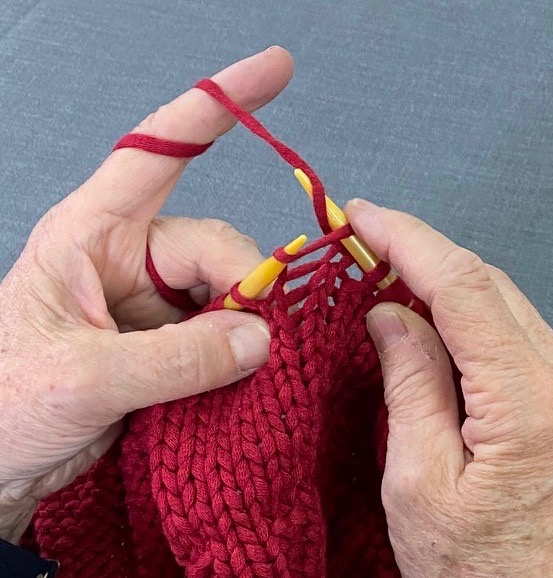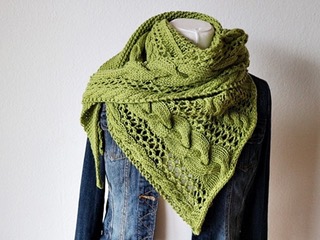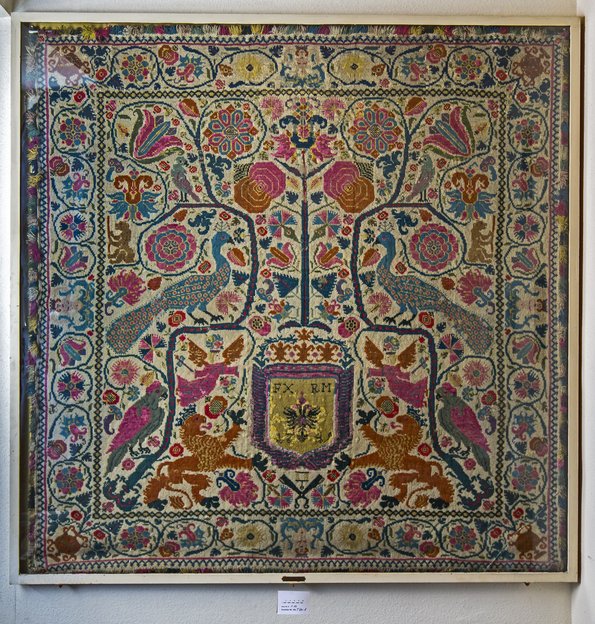“Inestäche, umeschlah, durezieh, abelah” (Pierce, fold over, pull through, drop)
Knitting – tradition and history
by Brigitte von Bergen
“I cannot live without knitting.” “Our mother likes reading to us, while my sister and I are knitting.” “Self-knitted items should be beautiful and special, then they become favorite pieces.” “I love knitting while listening to a radio play.” “While watching TV, I knit, my hands need something to do.” These are some spontaneous statements about knitting by 14 to 93 years old women and girls.
Fascination of wool and stitch
If you go to a wool store today, you will see a huge colourful palette and a rich selection of soft merino wool, sock wool, fine mohair to luxurious cashmere, to angora and alpaca wool. Never before the selection has been so large as it is today. It makes your fingers itch, and the joy of knitting is reawakened.
Due to the lockdown during the Corona pandemic last year, people stayed at home, and many women have been inspired again by new knitting ideas and have started knitting. All it takes is two knitting needles and wool, and you can start knitting. Knitting is just an intertwining of the stitches with the help of knitting needles. In addition there is the well-known Swiss German saying: “Inestäche, umeschlah, durezieh und abelah” (Pierce, fold over, pull through, drop). All children, boys and girls together, learn to knit in school with this saying. One stitch after the other is finished, and then comes the next one. This is how a surface is created. The rich patterns are knitted only with right and left stitches.
A knitted work easily finds a place in a handbag. Wherever you have to wait, you can take it out – in the waiting room, at the children’s playground. There, mothers often talk to each other about their knitting. With the advent of the “women’s liberation” from the typical female role, this culturally transmitted tradition was displaced. Hardly any woman dared to show herself in public with a knitting. Fortunately, this has changed again.
Cultural history of knitting: Is knitting a female handicraft?
Originally, knitting was a male profession. The first professional knitting guild was founded in 1268 in Paris. Others followed in the upper Rhine valley, in north-eastern Switzerland, in Alsace and in Baden. Knitting was considered to be an honourable and lucrative craft. The Nuremberg guild of hosiery and pants knitters accepted only persons who had completed a four-year apprenticeship and an equally long period as a journeyman. To pass the demanding master craftsman’s examination the production of a round beret, a pair of stockings, a camisole (thin silk top), a pair of gloves and especially a carpet of up to 20 fresh colours with figures, flowers and foliage, two by three meters in size, was prescribed. Such a masterpiece from 1749 is in the possession of the cathedral parish of Lindau on Lake Constance (see illustration). How this large piece was knitted is not known.
The art of knitting is very old, it is not known exactly where it was developed. One assumption is that the actual originators of knitting were the Copts in Egyptian Bahnasa. Knitted garments from the 4th and 5th century were discovered there. Magnificent coffin cushions from the 13th century were found in northern Spain in a royal tomb. They are very finely worked with elaborate patterns and with gossamer yarn. Knitting as well as other handicrafts were widespread since the Renaissance in the 15th century in women’s convents.
The steel knitting needles
The earlier knitting needles were made of wood, bone or goose feather quills. Since one could wire, knitting needles have been produced in large numbers, fine, smooth, straight needles. This was a sensation. Especially England with the large flocks of sheep had a correspondingly large amount of wool. This was spun very finely, for weaving the fine English wool fabrics and for knitting. A knitting boom was triggered. The zeal in knitting for God’s Son and God’s reward went so far that English priests forbade the clattering of needles during the service. After that, for a long time, knitting was no longer done on Sundays in England. Toward the end of the 16th century, there were 200,000 home workers in England, who annually exported 20 million pairs of knitted stockings to Spain, France, Italy and the Netherlands.
Women as well as men knitted in all work where their hands remained free, be it herding sheep on stilts, as night watchmen on guard duty, even carrying loads over long distances. Girls were only allowed to read while knitting.
The time of industrialisation
The 19th century was the heyday of industrialisation. Factories were built, especially for textile processing and the machine industry. Men earned a living for their families in the factories. Their wives took care of the children, did housework and knitted for the family. They often did home work for the textile mills as well. William Lee, an English clergyman, developed the first knitting machine in 1589. It achieved astonishing results and was therefore strongly opposed by the professional knitters and the guilds. In spite of everything, this further development brought about machine knitting at the end of the 19th century, which gave new impetus. This was the beginning of jersey processing as we know it today in many variations, from underwear to outerwear and sportswear.
The factory owners’ wives filled their time against chronic boredom with knitting of fine things. Thus arose the opinion, knitting was a woman’s business. They knitted very beautiful fine clothes for their children, dolls, lace doilies for the whole apartment. They wanted to mark themselves off from the working families, who needed warm clothes for the family.
The jumper – a new discovery after the First World War
During the First World War, when the men were on the frontier as soldiers, more and more women also here in Switzerland had to work in the factories and needed comfortable work clothes. The hand-knitted jumper became an important discovery in Switzerland at this time. It became a popular garment for work and leisure for both women and men all over the world. At that time, eastern Switzerland was still the stronghold of the textile industry, but this branch of the economy then collapsed in the 1920s. Women and also men took on knitting jobs as a means of earning a living in the misery of unemployment. They knitted jumpers, socks, gloves and hats. Fine stockings for women were also popular as fashionable dresses became shorter. They went from house to house with them, offering the beautiful hand-knitted things.
The fishery needed warm water-repellent jumpers
The special thing about the woollen jumper is its ability to absorb a lot of moisture without getting wet; it dries quickly and its stretchiness is comfortable when working. You have to air it out well and wash it only rarely. The uni-coloured Guernsey fisherman’s jumpers, the black and white Norwegian jumpers with stars and the coloured Shetland jumpers became famous.
The famous Guernsey fisherman jumpers have been knitted in England and Ireland since the 17th century. What is special about these jumpers is that they are very tightly knitted, without seams, almost windproof and water-repellent. Many of the knitting patterns used come from the lives of fishing families. The knitted-in patterns are symbols: cables for ropes, cross lines for ladders, diamonds for fishing nets, fish bones for the catch. The recognisable zigzag line is called the wedding line and reflects the ups and downs of a marriage. Every family had its own patterns, which the mothers passed on to their daughters. So, you could tell from the jumper which family the wearer came from. These jumpers are still very popular among sailors today.
The Norwegian Ebba Drolshagen wrote the first book about the history of knitting: “Two right, two left”. A young goatherd in Norway invented the well-known octagonal Norwegian star, an octagonal star knitted in black and white, while she was herding goats in the year 1857. Mittens with two stars were worn by almost all Swiss skiers in the 1950s, as well as the classic Norwegian jumper, knitted in black and white with stars. The round yoke, which joins body and sleeves without seams, is also well-known. The jumpers from the Shetland archipelago are knitted in five colours. In these multicoloured knitted jumpers, the coloured threads are knitted along, creating a multi-layered surface that is correspondingly warmer.
Work school
In the canton of Zurich, the Swiss Society for Common Good (SSCG) called for the establishment of work schools in 1830 to teach girls “feminine work”. The Education Council soon declared work schools as compulsory for all girls. They learned to sew and mend dresses, knit and stitch socks. This education of the girls promoted general prosperity. A capable housewife could apply what she had learned and saw in it her task, her purpose and her joy. Handicraft lessons were included in the curriculum, and in parallel, handicrafts were taught to the boys so that they learned how to handle tools. Thanks to this continuous systematic teaching over many years, the children acquired handicraft skills and the foundation was laid for vocational skills.
On the meaning of knitting today
The large triangular shawl shown here with its various knitting patterns is both, warming and eye-catching. Knitting this shawl trains the coordination of both hands, the dexterity in interlacing the stitches. Counting and calculating the knitting pattern promotes imagination, making the knitting patterns demands concentration, and perseverance is also trained when knitting this beautiful triangular shawl. The variety of colours and wools and the knitting booklets with suggestions available today allow for creativity without limits. While knitting, one can chat, sing, read, listen to the radio, watch TV. But knitting is also an excellent training for the fine motor skills of the hands. Knitting has a relaxing effect and promotes cognitive skills. All this has a positive effect on the brain, heart and mind. Nothing lifts the attitude to life as much as creating beautiful things with handicrafts and thus filling the leisure hours of the day! •
A man becomes a human being in the real sense by forming his heart, his manual skills and his mind. This is how Johann Heinrich Pestalozzi describes it.
Sources:
Deutsches Textilforum;
Drolshagen, Ebba. Zwei rechts, zwei links. Geschichten vom Stricken. (Two right, two left. Stories of knitting.) Frankfurt 2017
König, René. Macht und Reiz der Mode, Verständnisvolle Betrachtungen eines Soziologen. (The power and allure of fashion, a sociologist’s insightful reflections) Düsseldorf/Vienna 1971
Schiller, Jörg. Guernsey – Fischerpullover. https://de.paperblog.com/guernsey-fischerpullover-992530
Thiel, Erika. Geschichte des Kostüms. Die europäische Mode von den Anfängen bis zur Gegegenwart. Leipzig 2010


